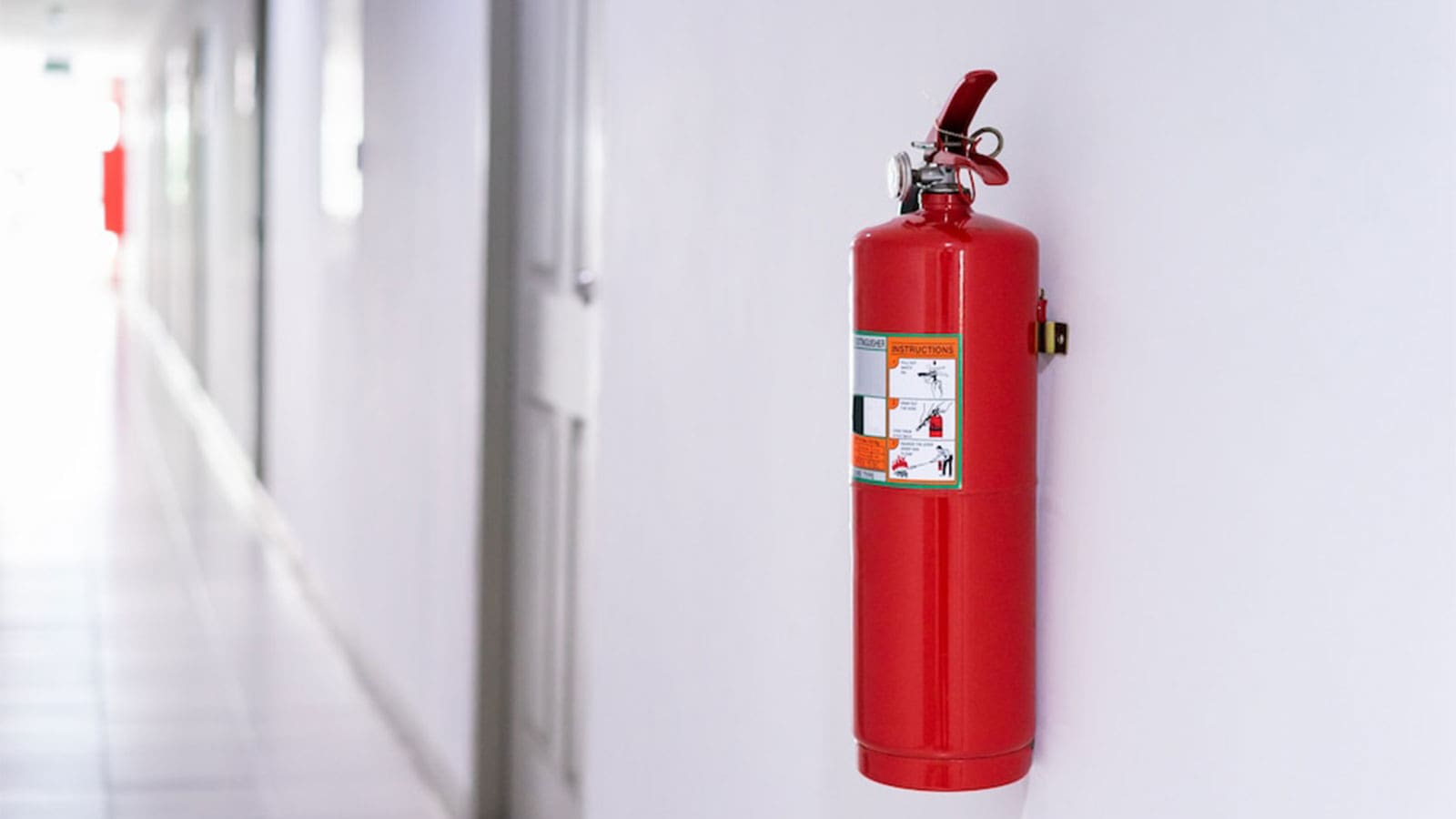Importance Of Fire Extinguisher Maintenance
- Field Service Management
- 9 Min Read
When it comes to fire safety equipment, specifying and installing the correct equipment is critical and mandatory. This is the first and crucial step to protect you, the people near you, and your property.
However, it doesn’t end with installation. You need to be sure the units will work as they should if and when needed–which requires routine inspections and maintenance.
Business owners often don’t pay attention to their fire extinguishers until they need to use them. But a fire extinguisher is often the best method of fire protection that can prevent a fire from growing.
Fire extinguisher Maintenance is code required for all residential and commercial facilities.
Whether dealing with a home fire or an industrial one, regular inspection and proper maintenance are essential to ensure that all types of fires don’t spread quickly and result in massive damage.
Hence, it is highly advised to conduct routine fire extinguisher inspections in schools, homes, public places, and offices, at all times to minimize risk and enhance efficiency when tackling potential fire hazards.
We at ZenFire have spent considerable time and effort creating a treasure trove of resources for your knowledge and safety.
Articles like life safety inspections, Fire marshal duties, fire hydrants, emergency exit doors, and fire safety inspection checklists will educate and keep you prepared.
Book a FREE demo now to streamline your operations.
Here What We Cover
Why is Fire Extinguisher Maintenance Important?
Regular inspection and maintenance of fire extinguishers ensure they are in proper working condition and can effectively extinguish a fire if needed.
Maintaining fire extinguishers involves several steps, including inspection, maintenance, and testing. Each step is essential to ensure the fire extinguisher is reliable and effective in a fire emergency.

Use our free estimate template now
Make winning quotes in minutes—for any industry and any job.
What Does Fire Extinguisher Maintenance and Inspection Entail?
The fire extinguisher maintenance and inspection requirements are divided into three sections: inspection, maintenance, and testing. In each area, information on what needs to be done, the qualifications of the person allowed to perform the work, the frequency of each step, and the method of recordkeeping the service is given

Inspection Process
Regular inspections are the easiest way to ensure your extinguisher can be used effectively in an emergency.
An inspection should consist of the following steps:
- Ensure the fire extinguisher is located in its given place.
- If workplace conditions change, update fire risk assessments and fire protocols.
- The fire extinguisher must be visible at all times, or there should be an indication of where the extinguisher is placed.
- Access to the fire extinguisher should be easy.
- Inspectors must ensure the pressure gauge is in the operable range or position.
- Make sure it is filled, which can be done by lifting and weighing the extinguisher.
- The tire conditions of wheeled (wheels, carriage, hose, and nozzle) extinguishers should be acceptable.
- For non-rechargeable extinguishers, operate the push-to-test pressure indicators.
Fire Extinguisher Maintenance Process
Maintenance procedures must include the procedures detailed in the manufacturer’s service manual and a thorough examination of the fire extinguisher’s essential parts, which include:
- Mechanical parts of Fire extinguishers
- Dousing or Extinguishing agent
- Expelling means
- Physical condition
- The Fire Extinguisher Maintenance can entail an internal examination as well. Your fire extinguisher service manual contains details on how to do an internal examination.
Hydrostatic Testing Procedures
A hydrostatic test always begins with an internal and external extinguisher examination, as described in the maintenance section. The extinguisher removes many components, so it is stripped down to just the shell and hose and is filled with water at a specific pressure for a particular time.
The extinguisher must be dried entirely to remove all the water and then reassembled. In case of any leakage, distortion, or permanent moving of couplings, the cylinder fails the hydrostatic test and must be condemned.
Get posts like this in your inbox.
Keep learning how to run a 5-star business with our bi-weekly newsletter.
Things To Keep In Mind In Fire Extinguisher Maintenance
1. Check Tags
Ever examine a fire extinguisher and find tags attached to it? These tags indicate the date of inspection of that specific fire extinguisher. This information can provide the building owners with vital information regarding the maintenance of their fire extinguishers.
2. Get Professional Service
Fire extinguishers are more complicated than most people realize. That is why it is essential to find a professional to conduct regular inspections on fire extinguishers. These professionals look for several things when working on annual reviews.
Annual inspections will examine whether there was any tampering or signs of damage to the fire extinguisher, which could result in it not working. Also, these inspections will look for the correct pressure necessary for a properly working fire extinguisher.
3. Thorough Inspections
In addition to the annual inspection, fire extinguishers require a thorough six-year and twelve-year review (known as a hydro test). During the six-year test, the technician will empty, refill and pressurize the fire extinguisher.
These thorough inspections will work step-by-step to ensure all fire extinguishers in your building are correctly working
Different Extinguishers need different Fire Extinguisher Maintenance.
Water extinguishers require a discharge test every five years, a requirement of the AS 1851 standard. This test ensures the extinguisher can discharge its contents correctly and at the correct pressure.
On the other hand, carbon dioxide extinguishers require a pressure test every five years.
Other types of extinguishers require different types of maintenance.
For instance, foam extinguishers require a thorough check of the foam concentrate to make sure it has not settled or become contaminated.
Regular fire extinguisher maintenance, emptying, and refilling are needed for dry chemical extinguishers every six years.
Every type of extinguisher in your building has unique maintenance needs, and you must be aware of these and adhere to them strictly.
To ensure that all of your fire extinguishers are maintained following industry requirements, ask a qualified provider of fire prevention services if you need more clarification.
The Advantages Of Regular Fire Extinguishers Maintenance
The following advantages come from keeping fire extinguishers in good working order:
Regular maintenance and inspections are required to spot possible problems, correct them, and keep fire extinguishers operating effectively.
The installation of fire extinguishers is compulsory for the majority of commercial buildings, according to the law.
An efficient fire extinguisher helps protect people and property by preventing a fire from spreading and inflicting more harm.
By maintaining the condition of your fire extinguishers, you may aid in the prevention of severe injuries and significant losses in property damage.
- Cost savings: Expensive repairs or replacements can be avoided by identifying problems early on.
- Peace of mind: Knowing that your fire extinguishers are in good working order can give you peace of mind and confidence that you are prepared for potential fire hazards.
Don’t wait until you discover dead batteries; set an annual battery replacement date on the first day of summer or Memorial Day. When changing the batteries in your smoke alarm, always adhere to the manufacturer’s instructions and do what they say.
Different Extinguishers need different Fire Extinguisher Maintenance.
Water extinguishers require a discharge test every five years, a requirement of the AS 1851 standard. This test ensures the extinguisher can discharge its contents correctly and at the correct pressure.
On the other hand, carbon dioxide extinguishers require a pressure test every five years.
Other types of extinguishers require different types of maintenance.
For instance, foam extinguishers require a thorough check of the foam concentrate to make sure it has not settled or become contaminated.
Regular fire extinguisher maintenance, emptying, and refilling are needed for dry chemical extinguishers every six years.
Every type of extinguisher in your building has unique maintenance needs, and you must be aware of these and adhere to them strictly.
To ensure that all of your fire extinguishers are maintained following industry requirements, ask a qualified provider of fire prevention services if you need more clarification.
Conclusion
Keeping your fire extinguishers in good condition is essential to ensure they function correctly, adhere to rules, and safeguard people and property.
Routine inspections and fire extinguisher maintenance is required to find potential problems with your fire extinguishers and ensure they function correctly.
Understanding the unique maintenance needs of each type of extinguisher in your facility is essential since different extinguisher types require various forms of upkeep.
Always look for a qualified fire protection service provider to do routine fire extinguisher inspections.
With the increased workload and efficient inspections necessary, fire protection service companies often need software solutions, to streamline their operations.
Book a personal demo appointment to learn more about ZenFire’s Smart Fire Protection software and how it can streamline your scheduling and other business processes.

Explore a better way to grow your business. Book a free demo now!
Get organized, win jobs, and wow customers.
Book A Free Demo with ZenTrades Today!
Related Reading
Why Your Field Software Management Software Needs QuickBooks Integration
ZenTrades Why Your Field Service Management Software Needs QuickBooks Integration Read More Request Demo...
Read MoreZenTrades How To Manage Electrical Service Agreements Like...
Read MoreZenTrades The Best 5 Jobber Alternatives In 2023...
Read More

